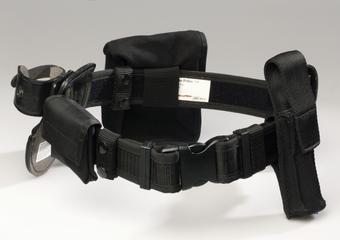
Artificial upper leg section for impact tests, England, 1985-1990




Upper legform impactor (No.1) used to accurately simulate the upper leg of a pedestrian in impact tests with the 'leading edge' of a car bonnet, with in-built sensors and cable leads for connecting to monitoring equipment. This is the first upper legform impactor developed by the Transport Research Laboratory, England c.1985-1990.
The first Upper leg form impactor (No.1) was developed by the Transport Research Laboratory (TRL). This leg section simulated the thigh of a pedestrian in impact tests with the ‘leading edge’ of a car bonnet. It has in-built sensors. Cable leads connect it to monitoring equipment. The TRL was responsible for ‘dynamic testing’, which involved simulated crashes. This was required for setting up standards and regulations covering car safety in the UK.
There was a 78% decrease in pedestrian deaths between 1967 (2,964 people were killed) and 2007 (646). This was due to increased car safety and awareness of issues such as drink driving. The UK had the lowest rates of road deaths within the EU in 2007.
Details
- Category:
- Public Health & Hygiene
- Object Number:
- 2005-91
- Materials:
- metal (unknown)
- Measurements:
-
overall: 340 mm 50 mm,
- type:
- artificial leg
- credit:
- TRL (Transport Research Laboratory)




